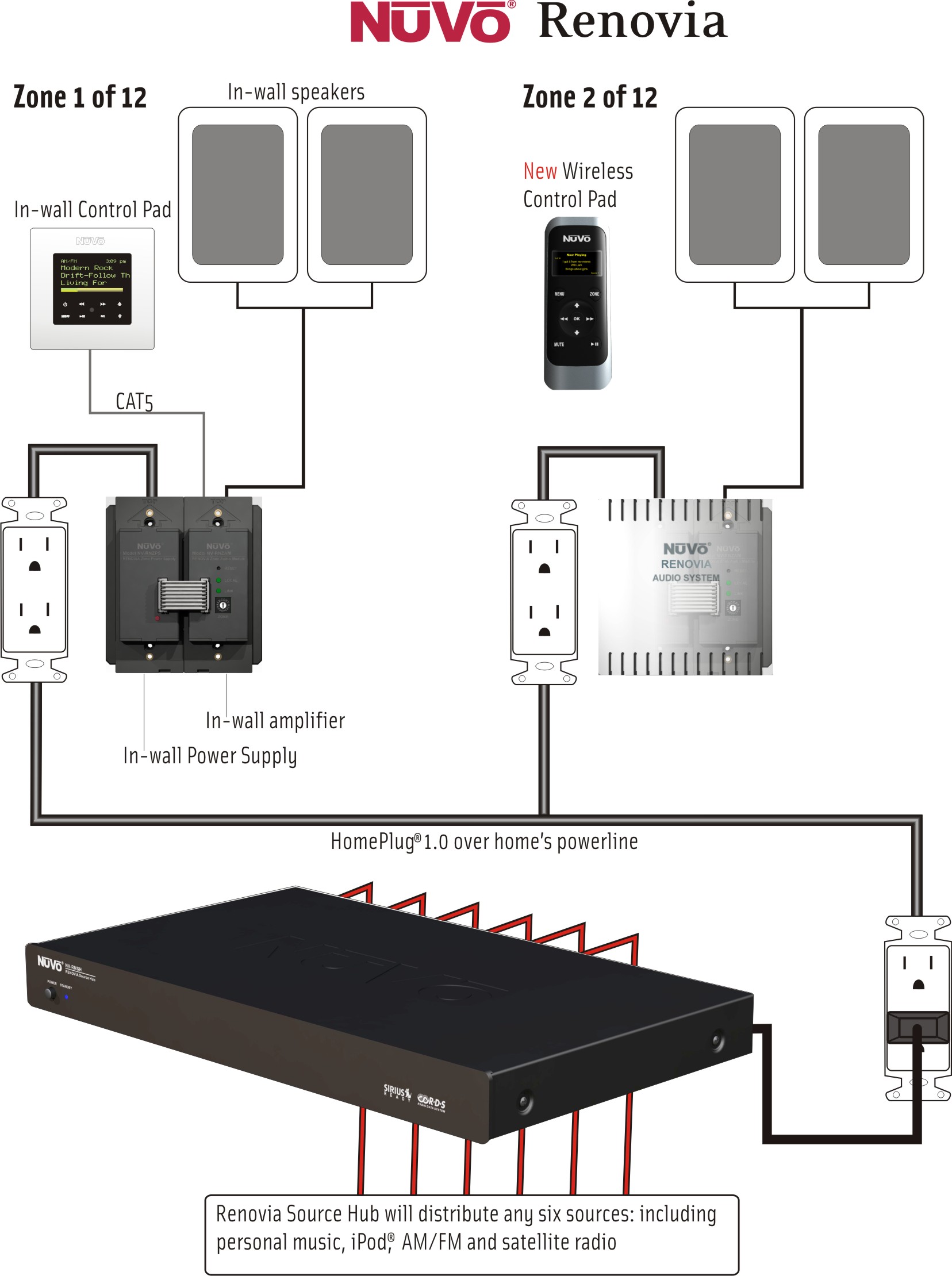Powerline-enabled multi-room audio
Enjoying music should be easy, as simple as listening to the music you want, when and where you want it.
With multi-room audio distribution, an increasing number of homeowners, globally, are bringing this simplicity into their homes.
But there have been barriers.
ADVERTISEMENT
Traditionally speaking, multi-room audio has been handled by running speaker wire and control wire (usually Cat5) throughout the home, then connecting centralised sources and amplifiers to each room or zone for local control and listening delight.
In other installations, the sources may be centralised while individual amplifiers are placed in each zone. This approach eliminates large runs of speaker wire through every area of the home, but still requires control cabling to be pulled.
Both of these methods are popular due to their straightforward logic and robust performance.
However, on the downside, the necessary wiring presents issues for installers seeking to work on existing homes, and proves to be especially difficult for those dwellings with concrete walls. These limitations force those who desire the freedom and pleasure of whole-home audio to choose between a lengthy, complicated, disruptive and expensive installation or a more restricted, less functional solution.
But enjoying music should be easy, so how do we knock those barriers down?
The answer on many minds is wireless. However, wireless audio is a method that brings its own complications and its success is significantly dependent on circumstances.
Even wireless alternatives struggle to really be free of cables and plugs, and problems like competing networks and limited bandwidth can keep a wireless set-up from delivering the steady and reliable audio experience a listener expects.
In order to truly make multi-room audio truly accessible, the answer we believe lies in systems which use less wire, rather than being wireless.
This could be the secret to accommodating existing homes’ structures while delivering clear and constant high fidelity audio.
This ‘less wire’ strategy is possible due to the recent advances and innovative applications of powerline communication (PLC) technology, which allows you to use the existing mains wiring in a home to deliver great quality, whole-home audio distribution.

PLC itself is not new, having been first introduced with X10 some 30 years ago.
Those who remember its introduction may recall this first instance as being plagued by problems of unreliability and breakability. But that was the past and the nature of the technology has changed rapidly.
Today, PLC as a technology platform has stabilised and expanded, transforming into a dependable approach for delivering control and audio in the home.
It has been secured largely through the formation of the HomePlug Powerline Alliance, which has fostered the evolution of powerline technology by developing a Standard for its use. HomePlug’s initiative has brought together key global players in the arena of technology and united them in efforts to work around the difficulties inherent in using AC mains for data transmission.
The current sponsors of the HomePlug Powerline Alliance include Cisco, GE, Intel, Motorola and Texas Instruments, among others.
Companies with HomePlug products in production include Belkin and Netgear (USA), Develo (Germany), Solwise (UK) and LEA (France). To date, over 25 million HomePlug products have been shipped.
Through their collaboration and support, HomePlug is able to provide a sophisticated solution that creates opportunity for high-value and useful applications of the technology now, as well as the foundation for future growth.
Building from this solid resource, whole home audio has a new and compelling alternative to the heavily wired solutions of the past. Using the electrical wiring already present in the home for much more than power, PLC enables a multi-room distributed audio system to send the audio and control data to every zone via the AC lines.
The HomePlug Standard functions at a higher range of frequencies and employs over 80 sub-carriers to prevent competition with other noise-emitting sources and secure the necessary bandwidth. The technology benefits from great adaptability to work within its circumstances.
In cases where excessive noise could hinder performance, specific carriers can be turned off, or supplemental filters added into the equation, to keep the system reliable and the resulting audio clear. This method conveniently allows for a system to be engineered into the home without the hours wasted or the headaches suffered from cutting into stubborn, solid walls.
It does not have a signal susceptible to the environmental hazards that trouble the reliable performance of wireless systems, such as other network interference or the walls themselves. The data is also synchronised as it is delivered room-to-room or zone-to-zone.
Of course, using less wiring in the home and doing more with it also has a really positive environmental message for homeowners keen to preserve the planet’s resources.
As a global Standard that is spreading, HomePlug continues to push forward; NuVo Technologies has recently launched multi-room audio products based on HomePlug in the USA, called Renovia, which will be available in Europe and the rest of the world within the next few months.
Russound has done similarly with its Collage system.
In my view, PLC has true revolutionary potential for the industry, a solution that applies to many aspects of custom installation. It promises a much higher grade of technology, at a lower cost, and allows installers to work with the structure of the home and not against it, and bring new levels of connection and control to the property.
As such, we firmly believe that it will be a game-changing technology for the custom installation sector, and will dramatically expand the market and its offerings for the benefit of dealers and their customers.
Enjoying music should be easy. Now, it really can be.
-
ADVERTISEMENT
-
ADVERTISEMENT
-
ADVERTISEMENT
-
ADVERTISEMENT
